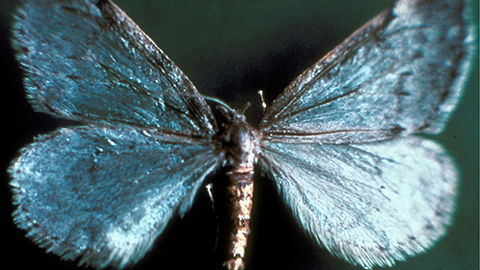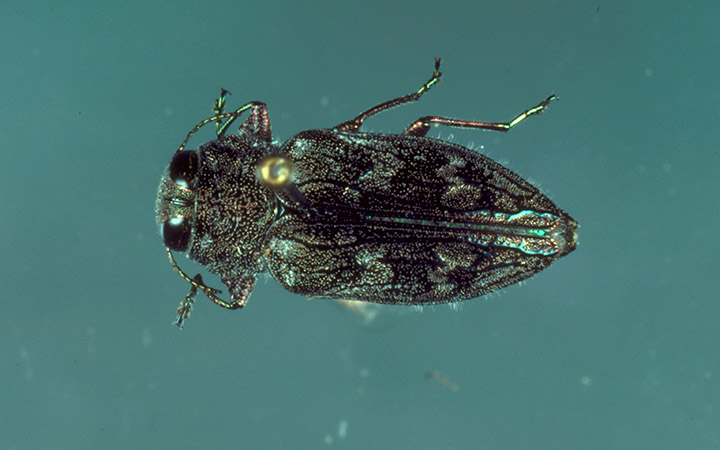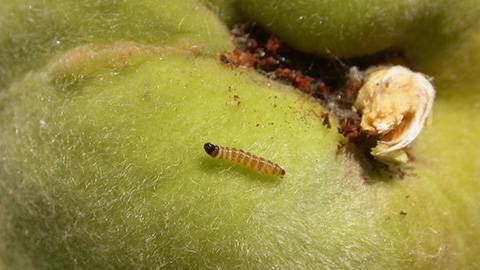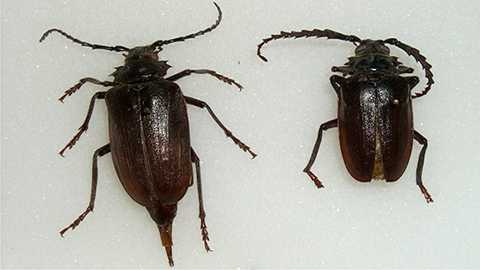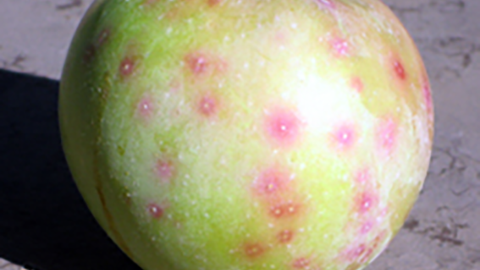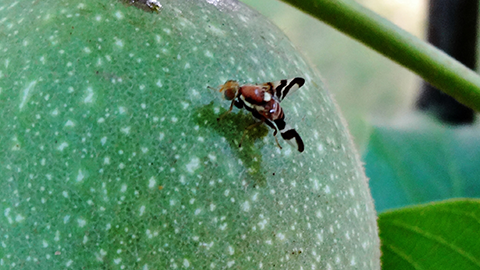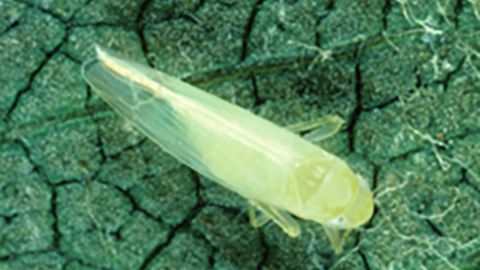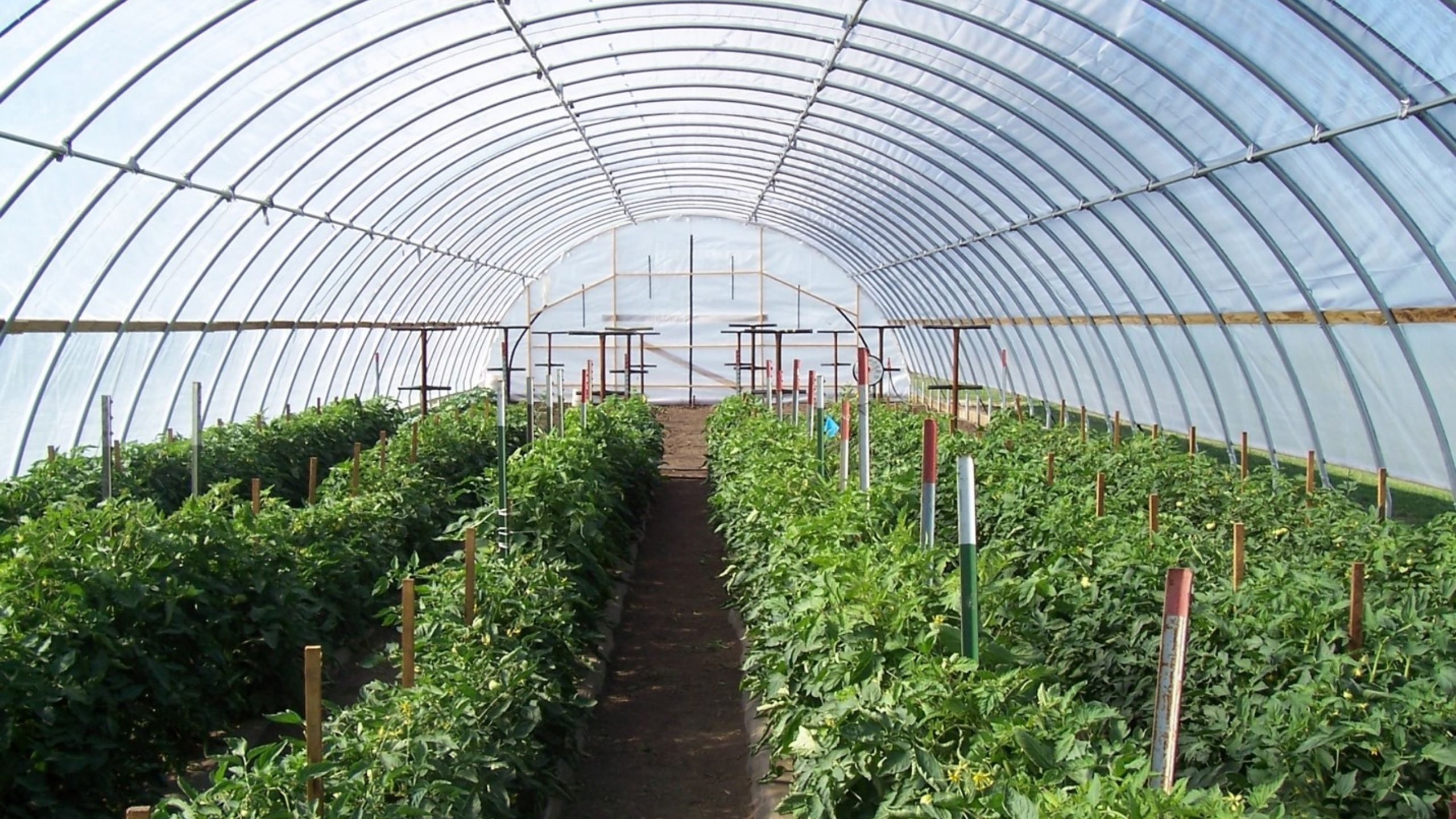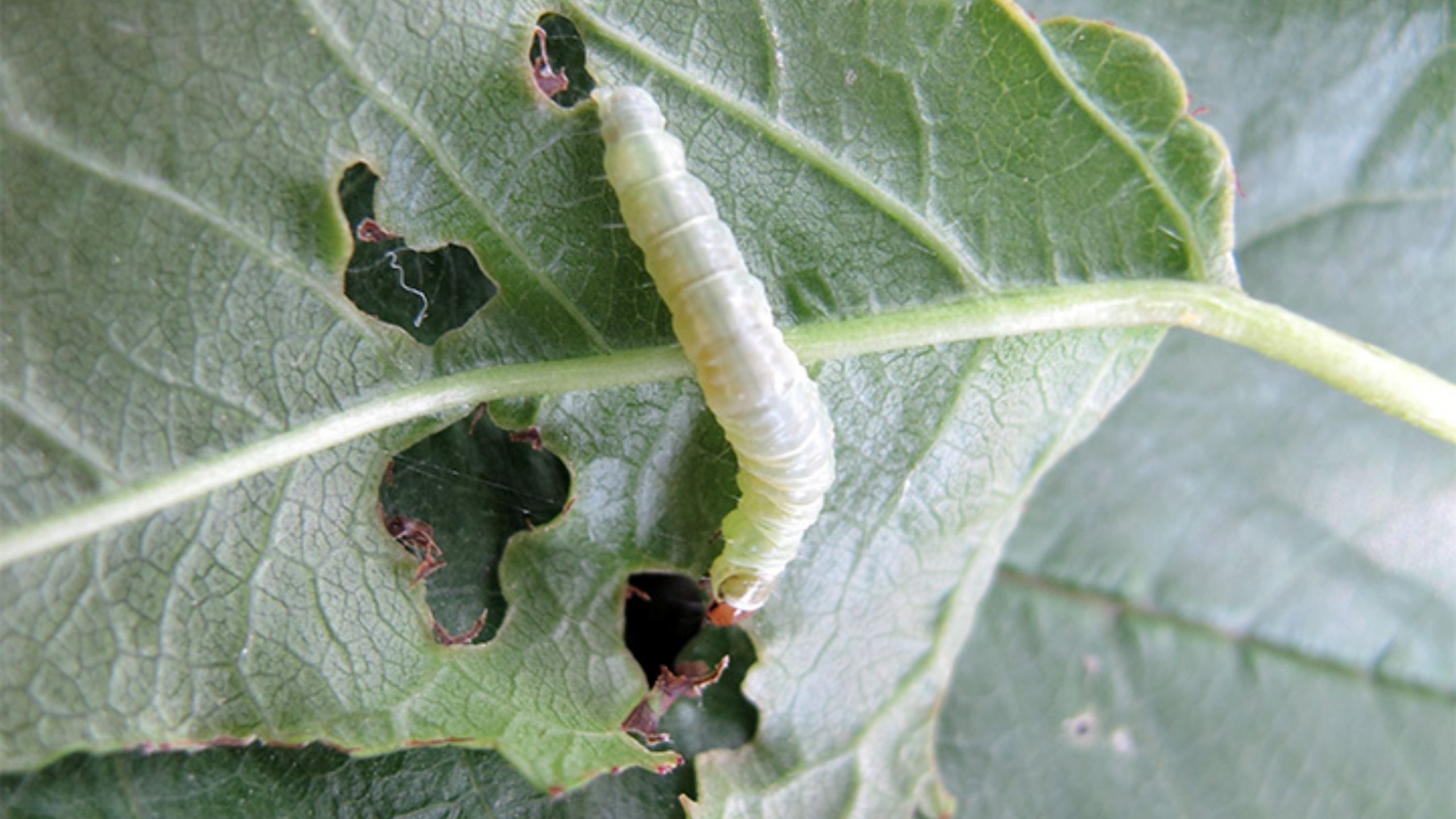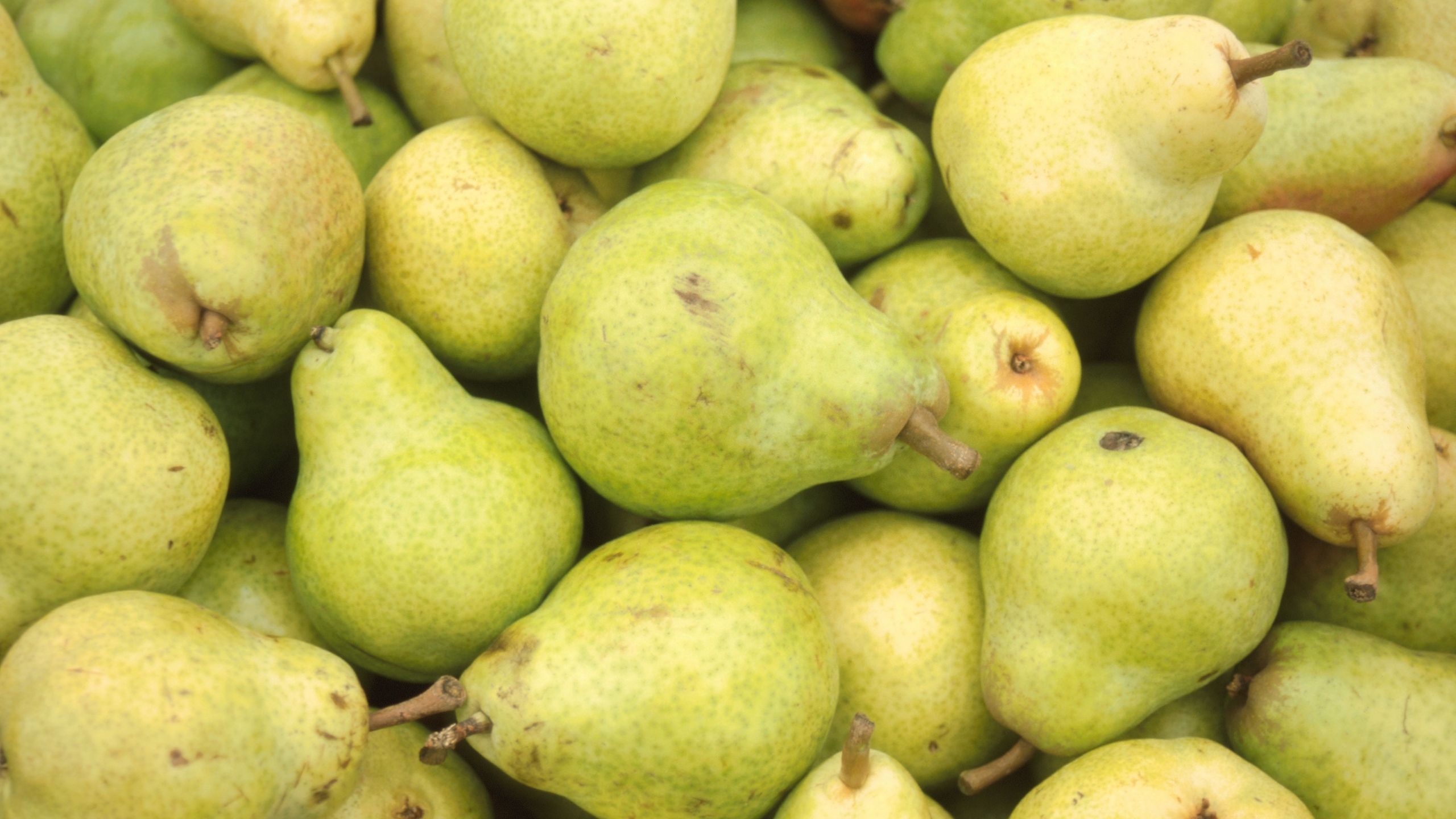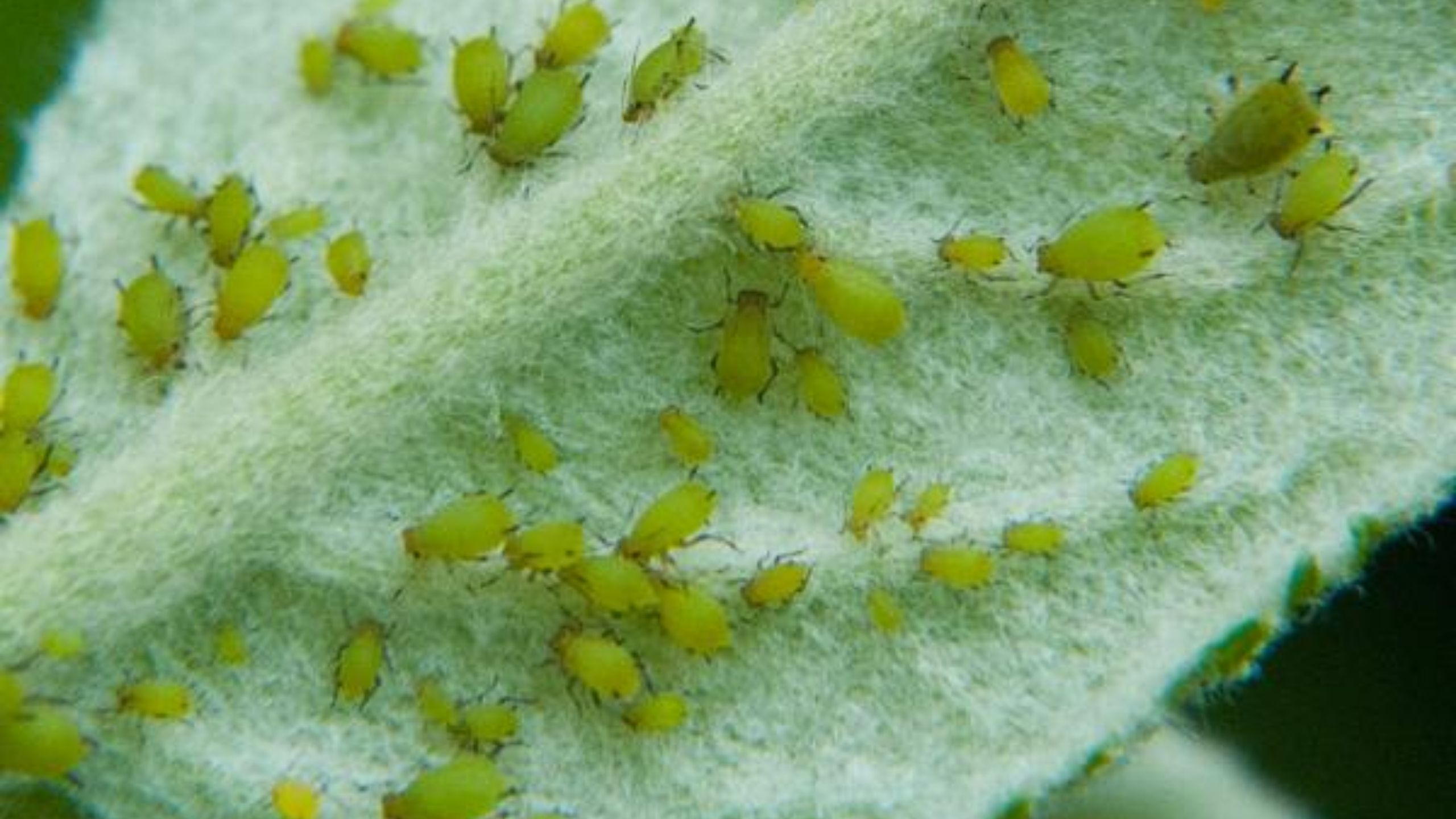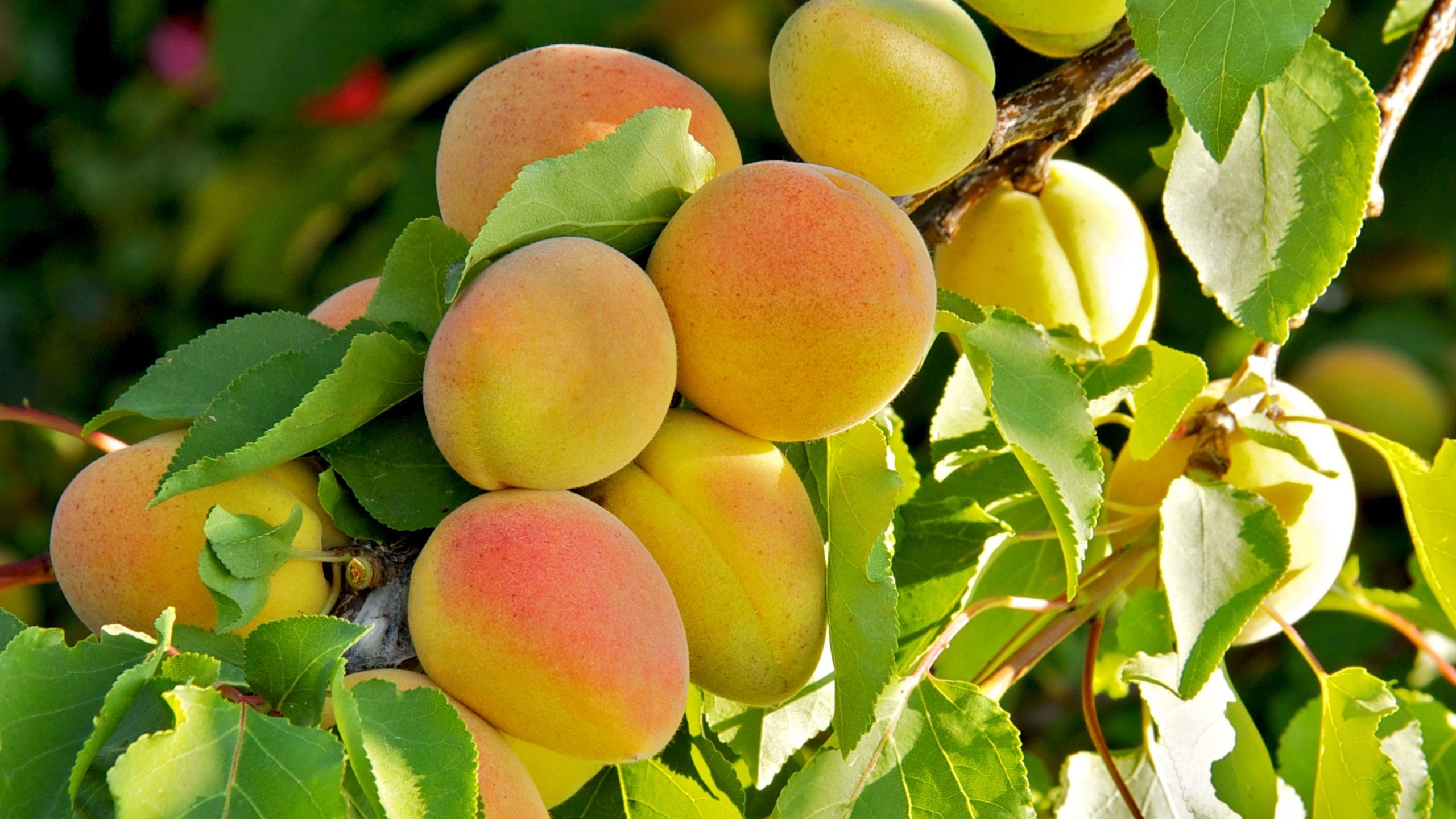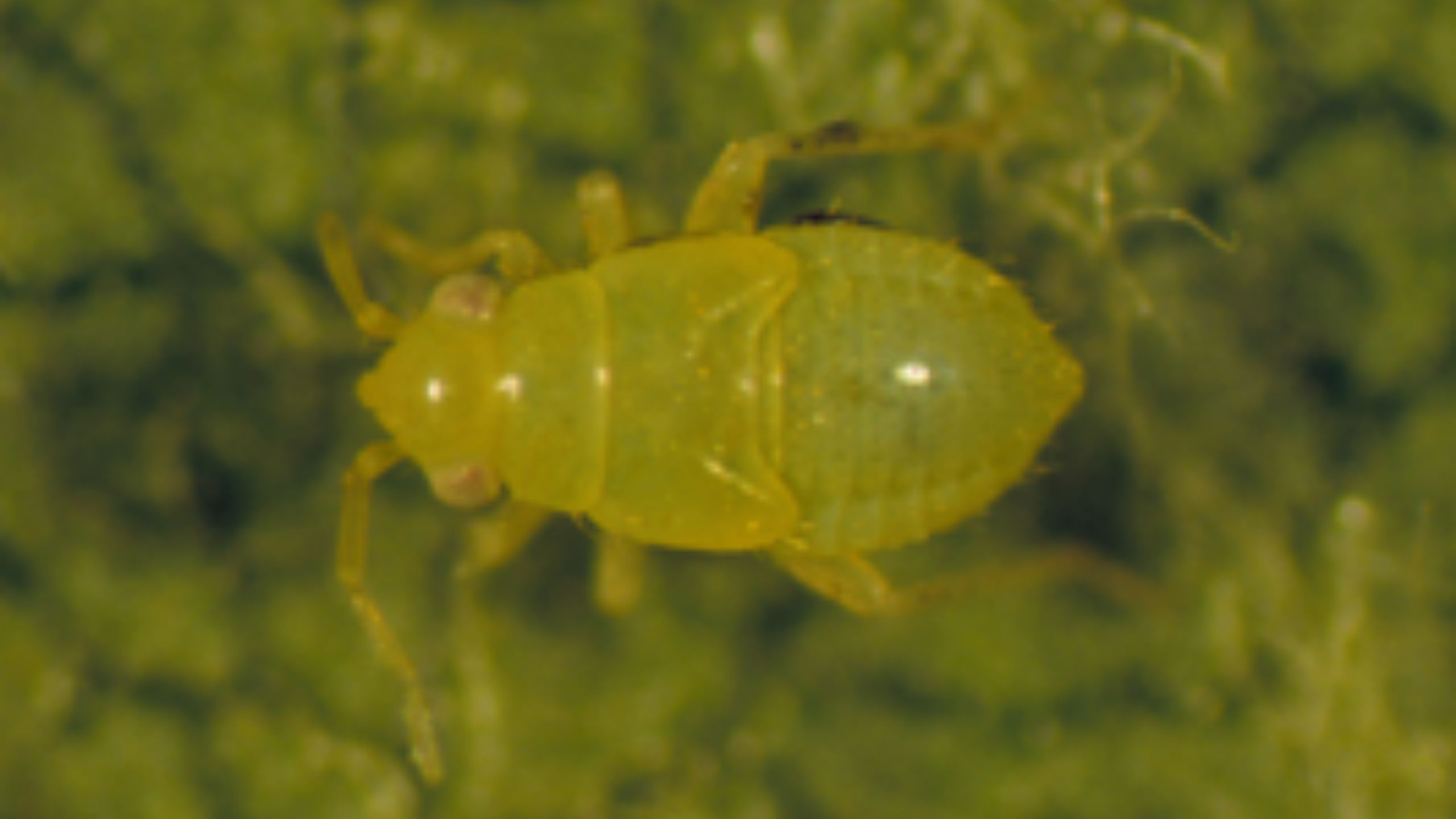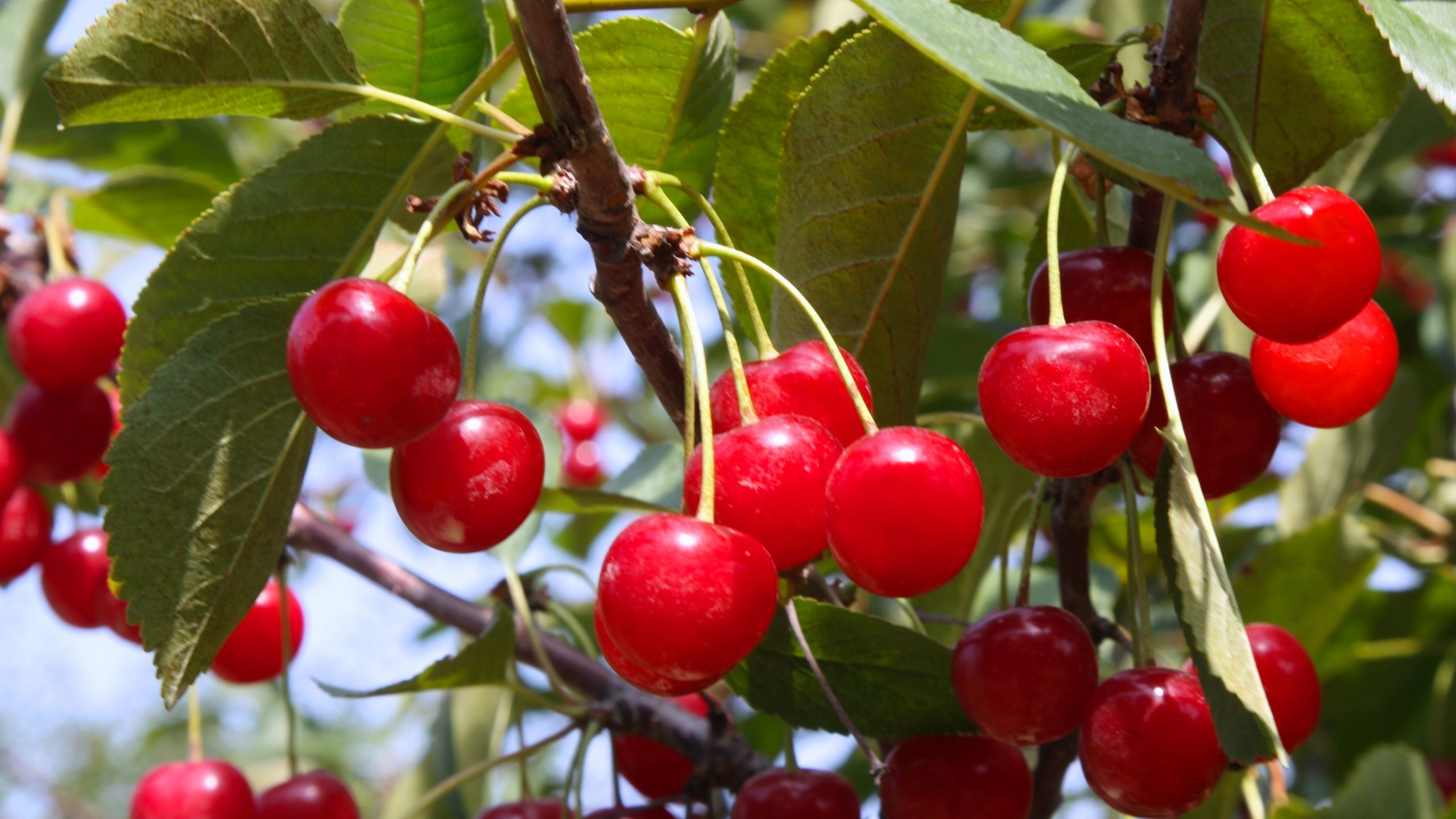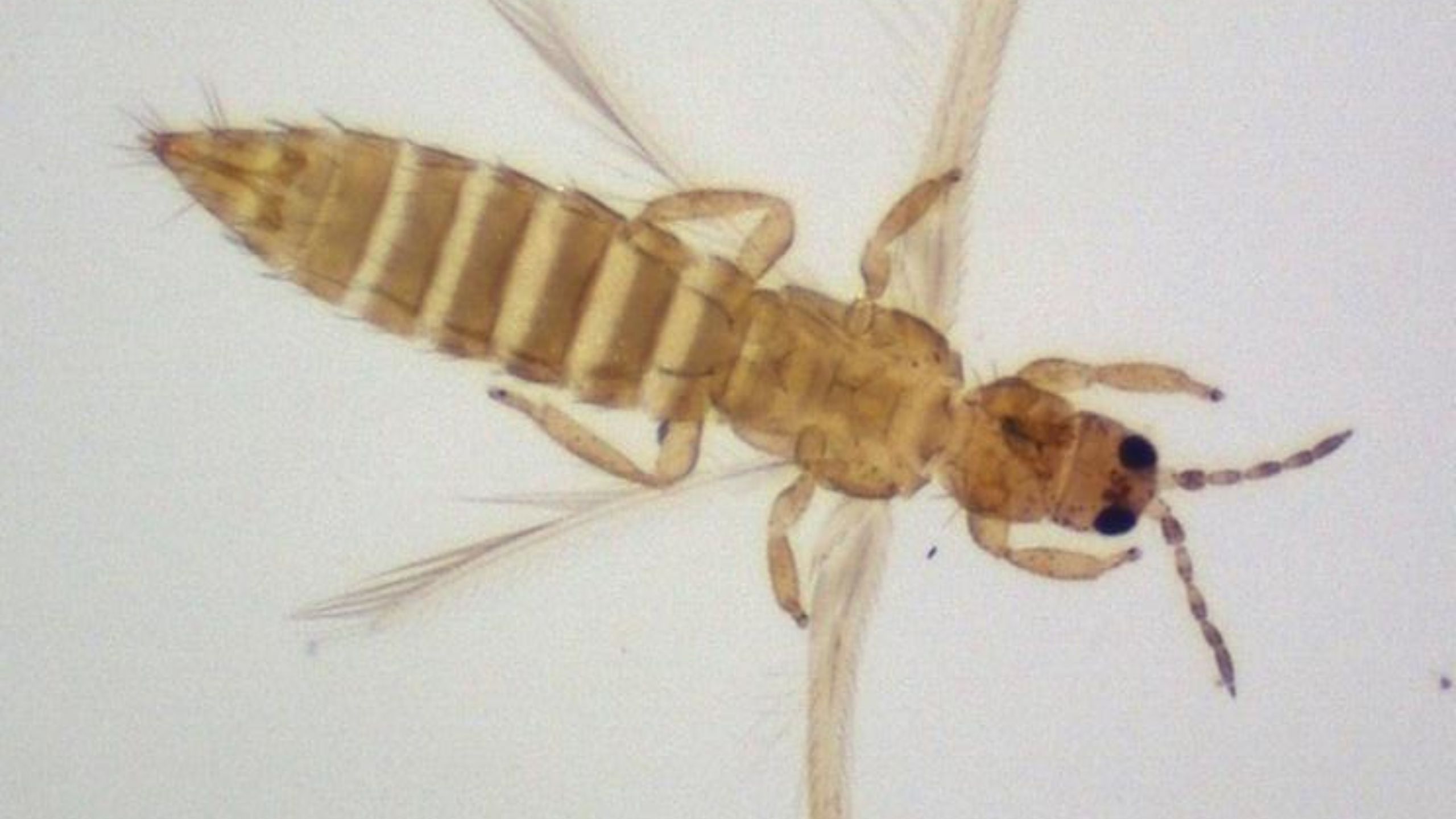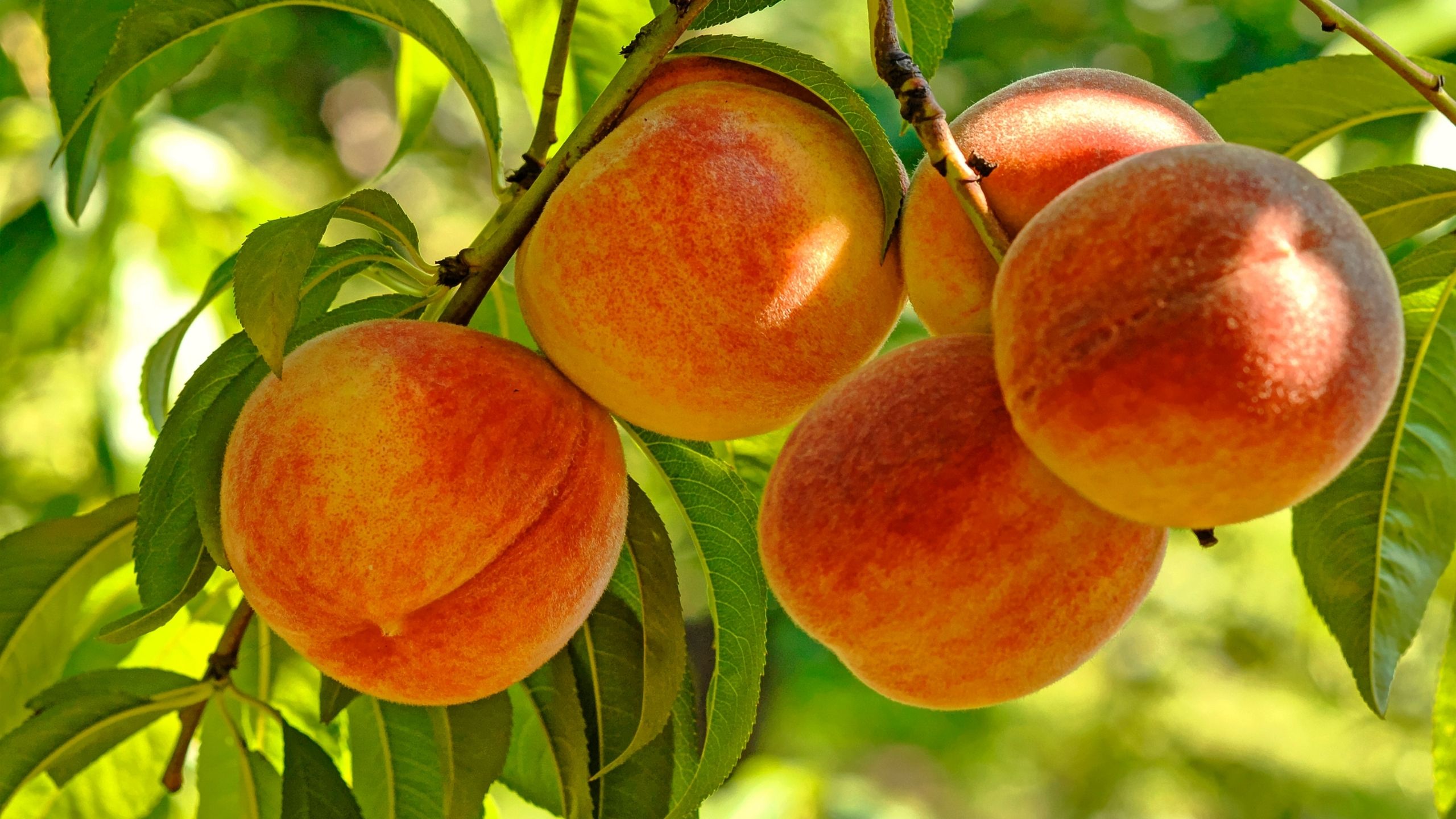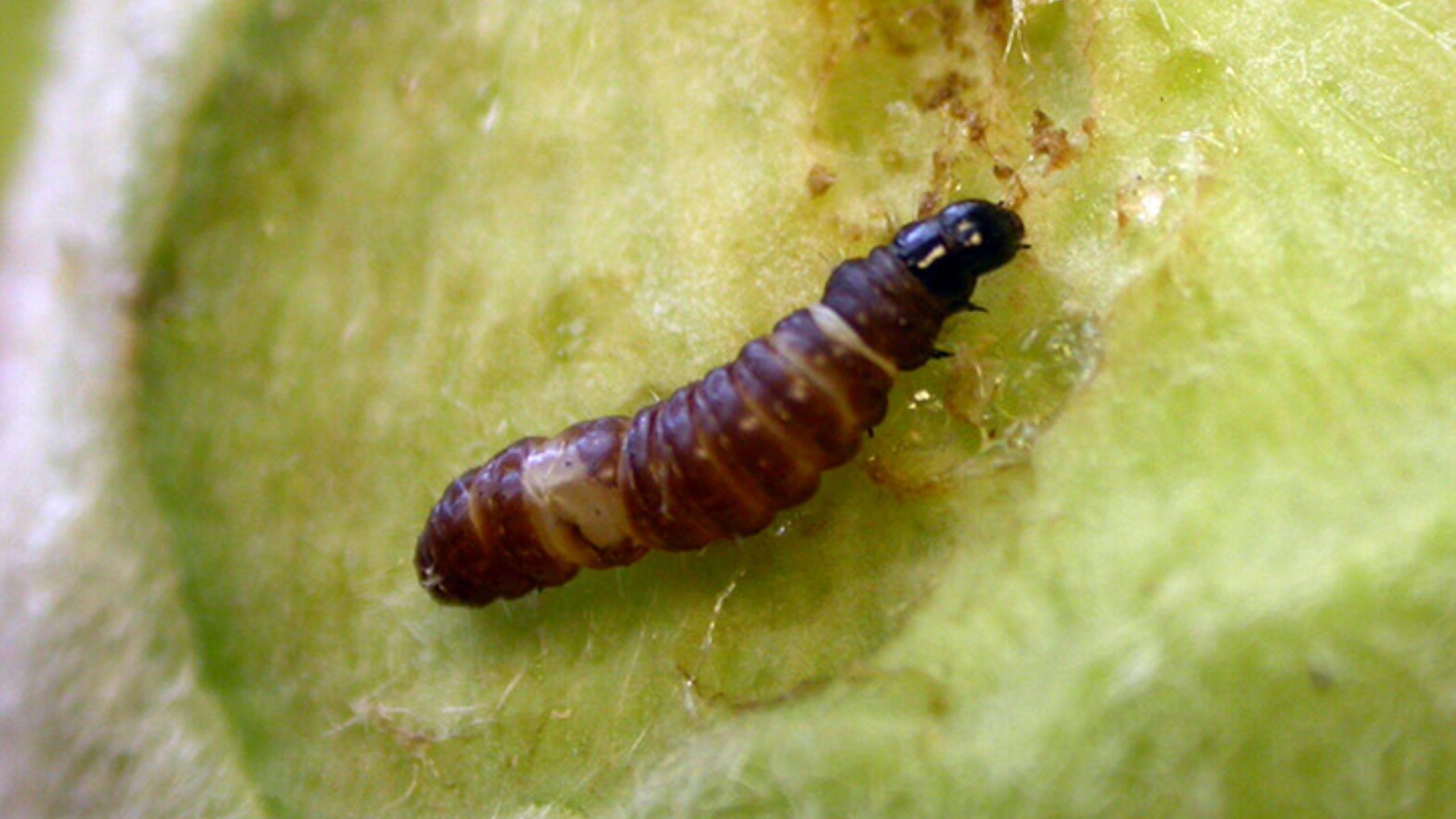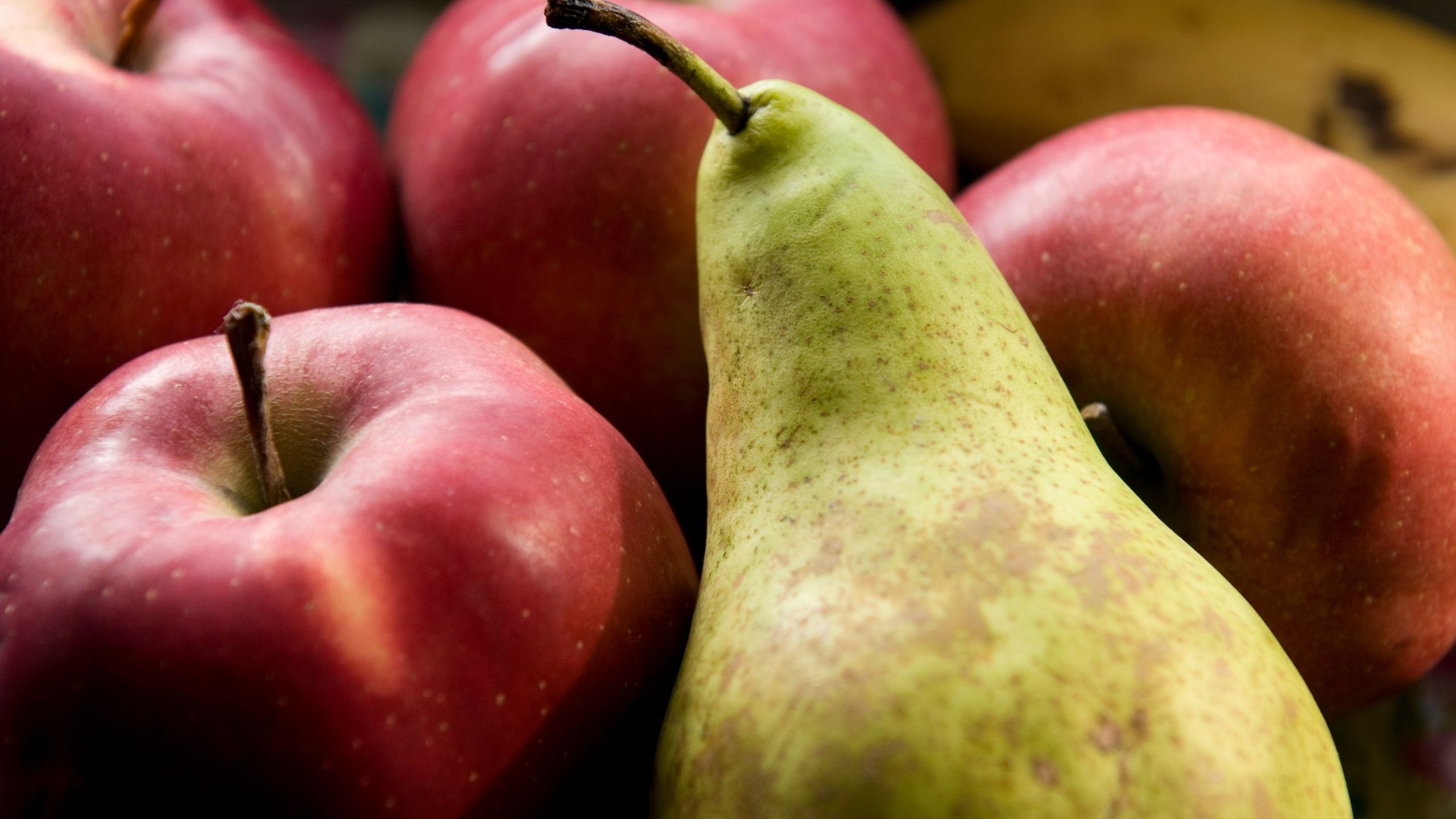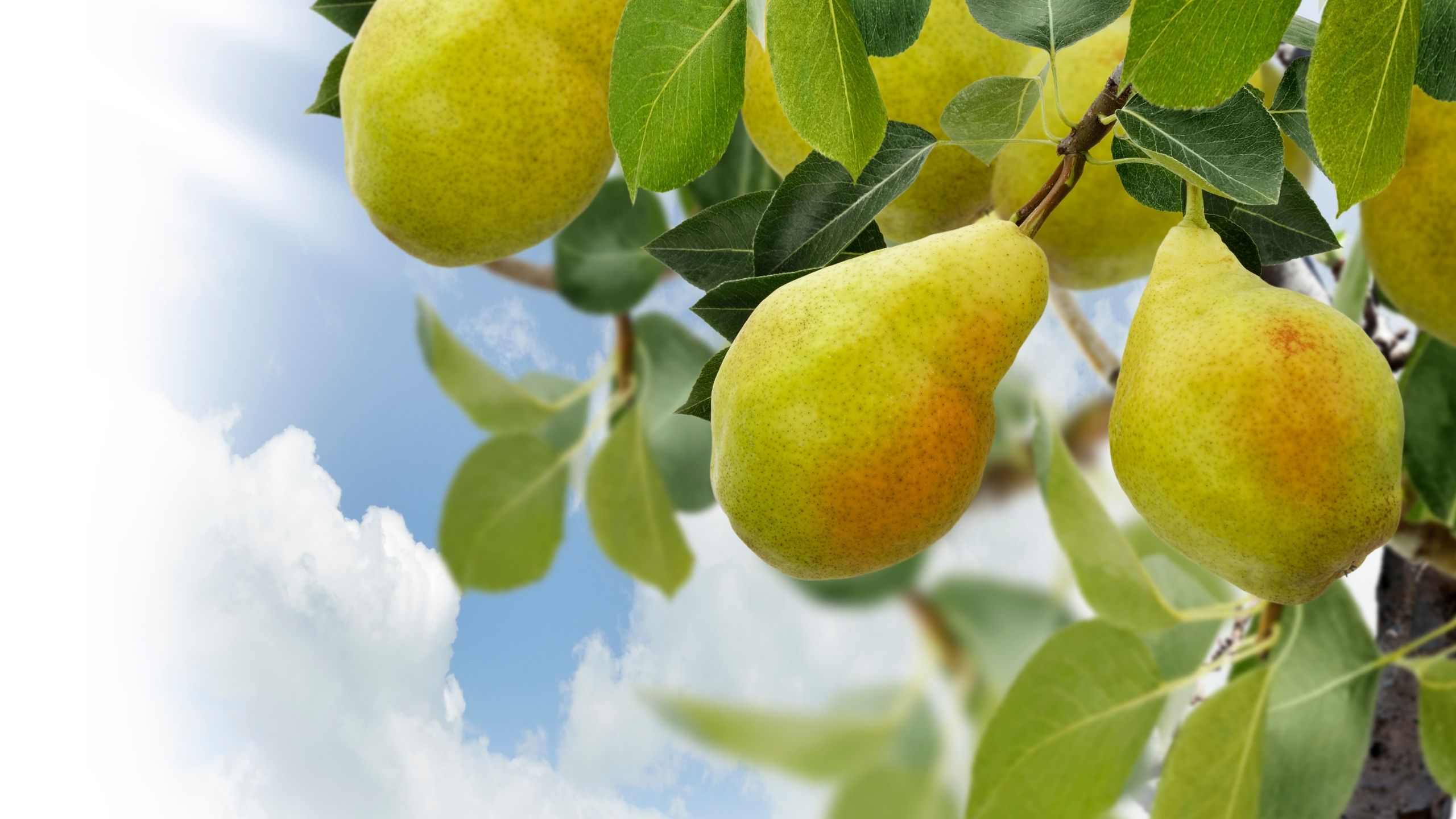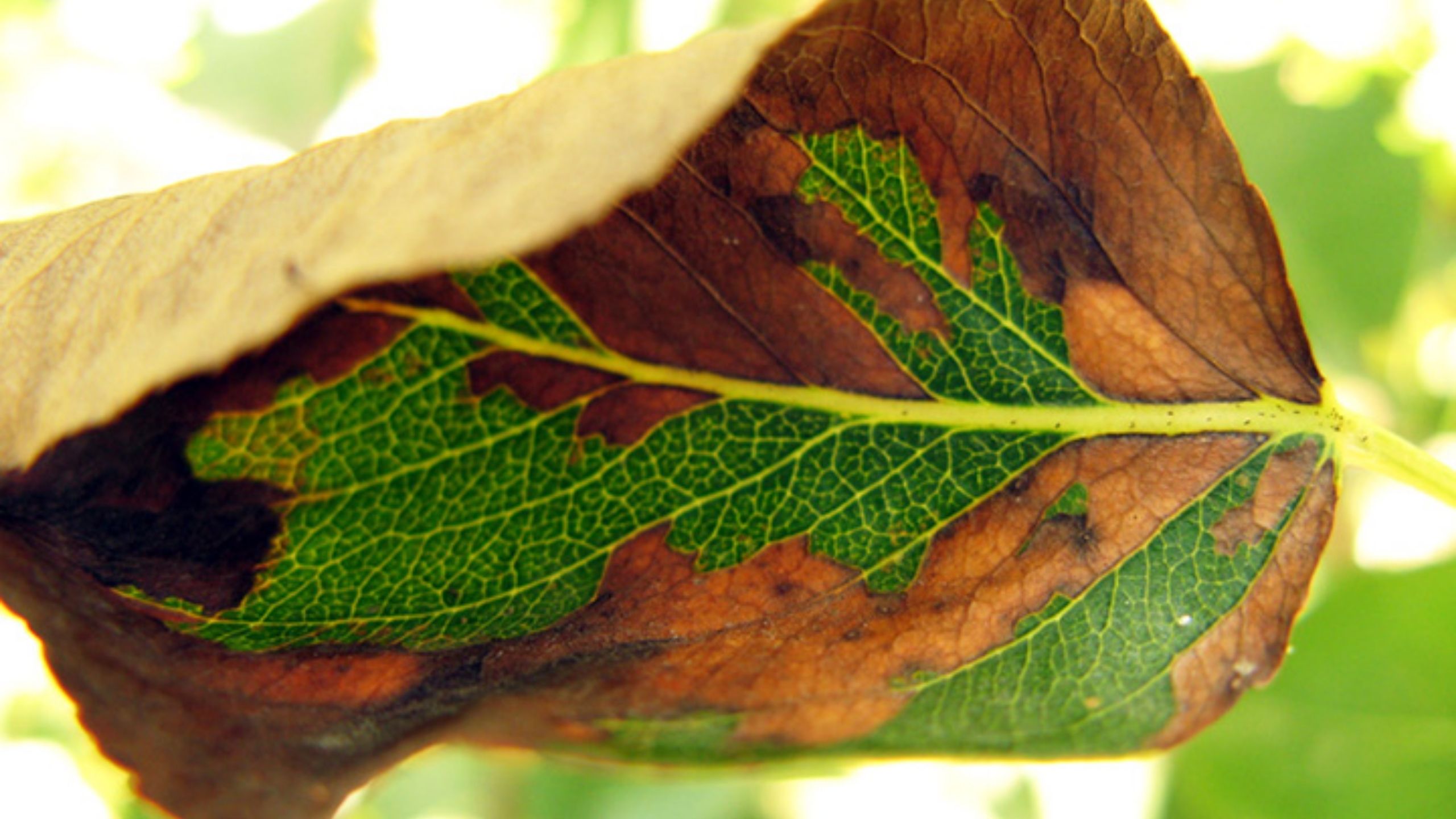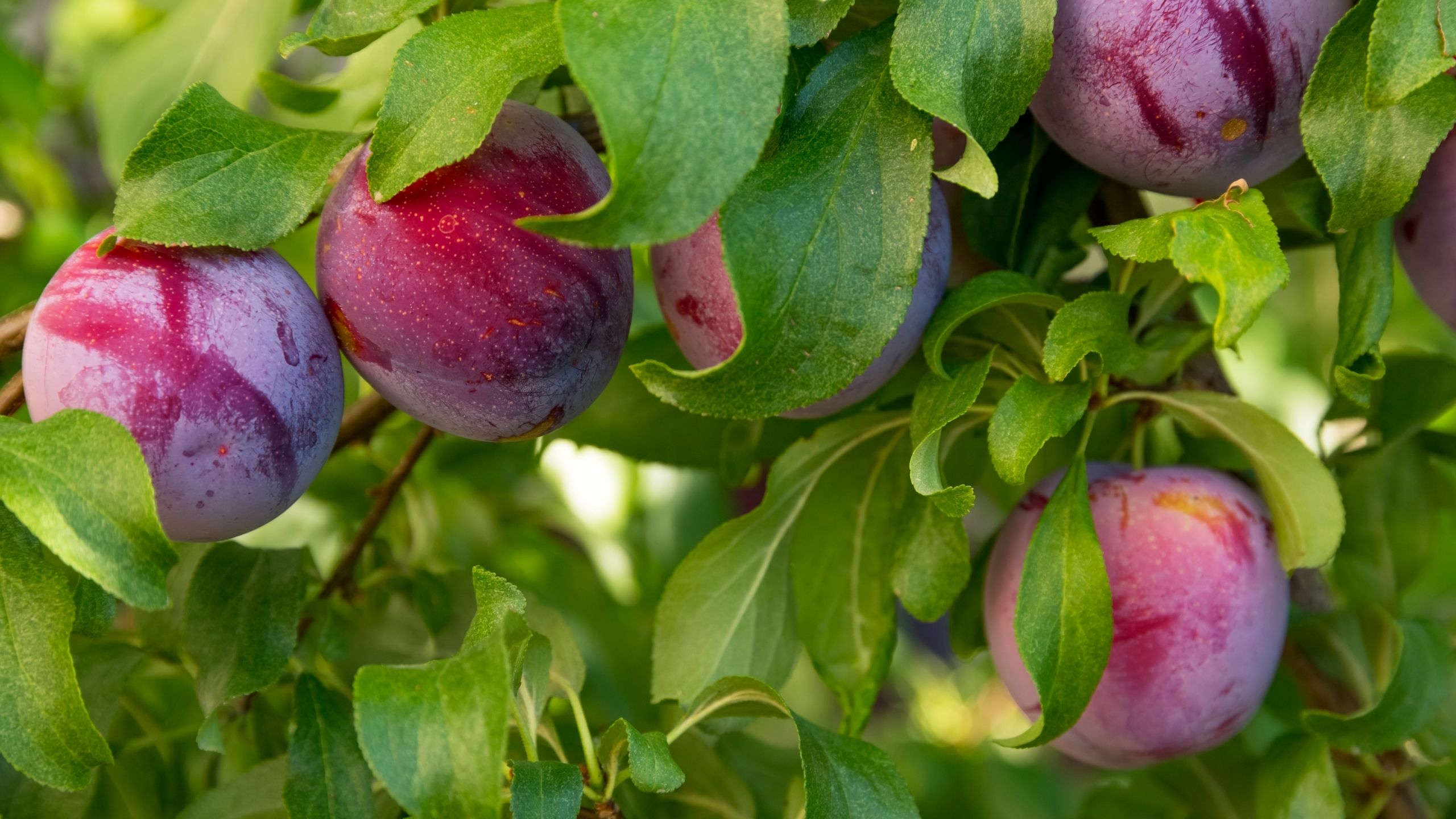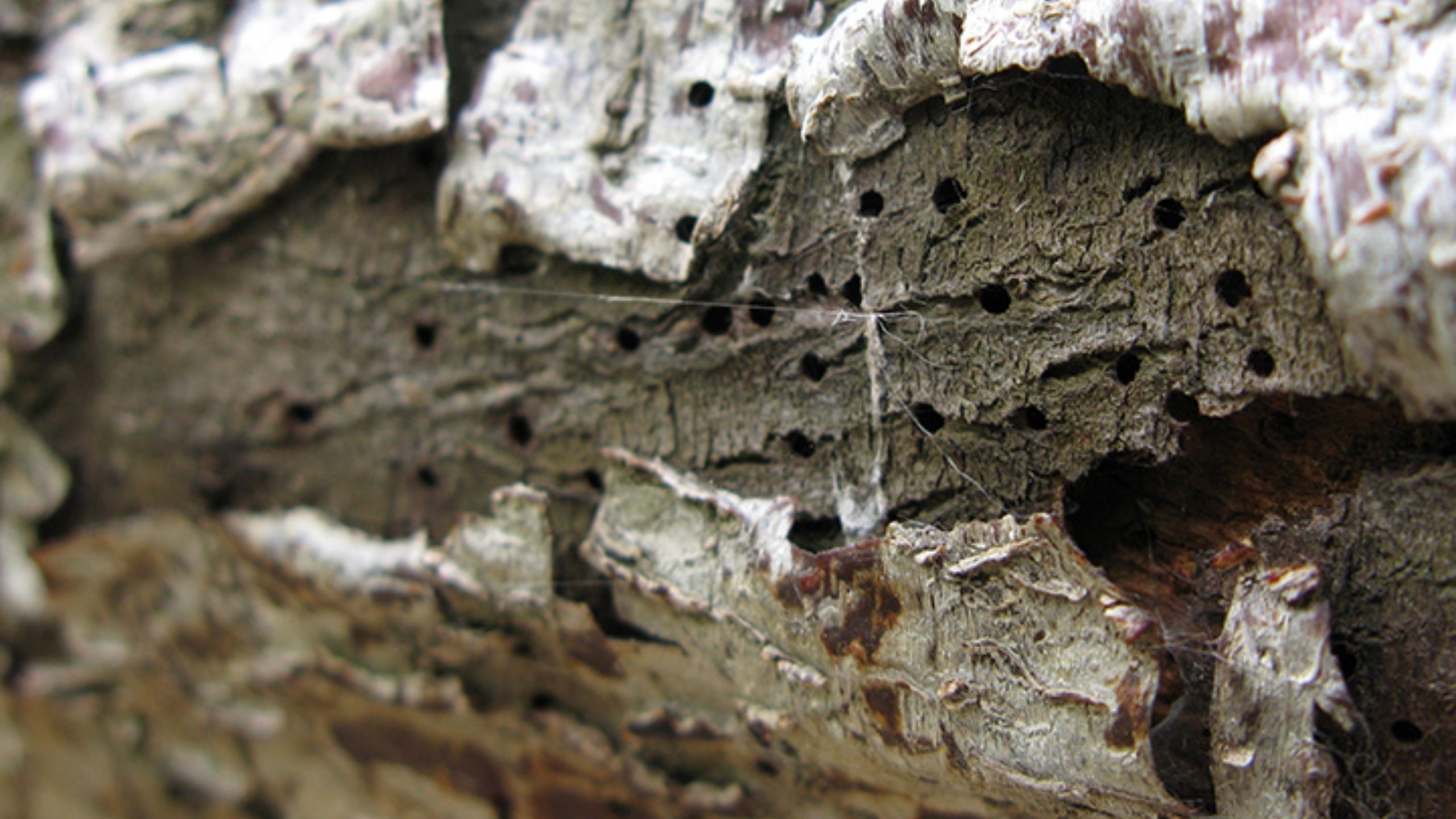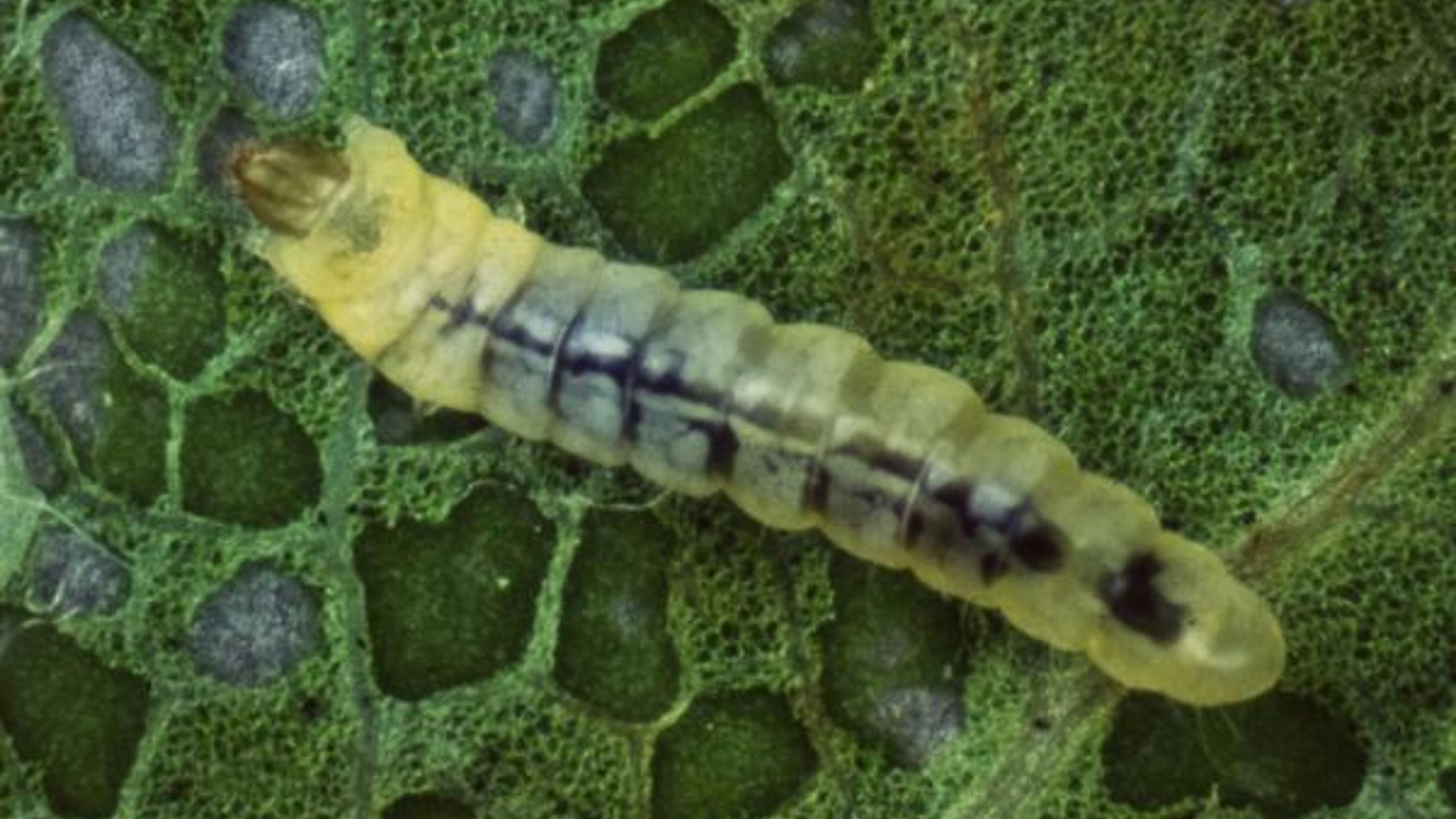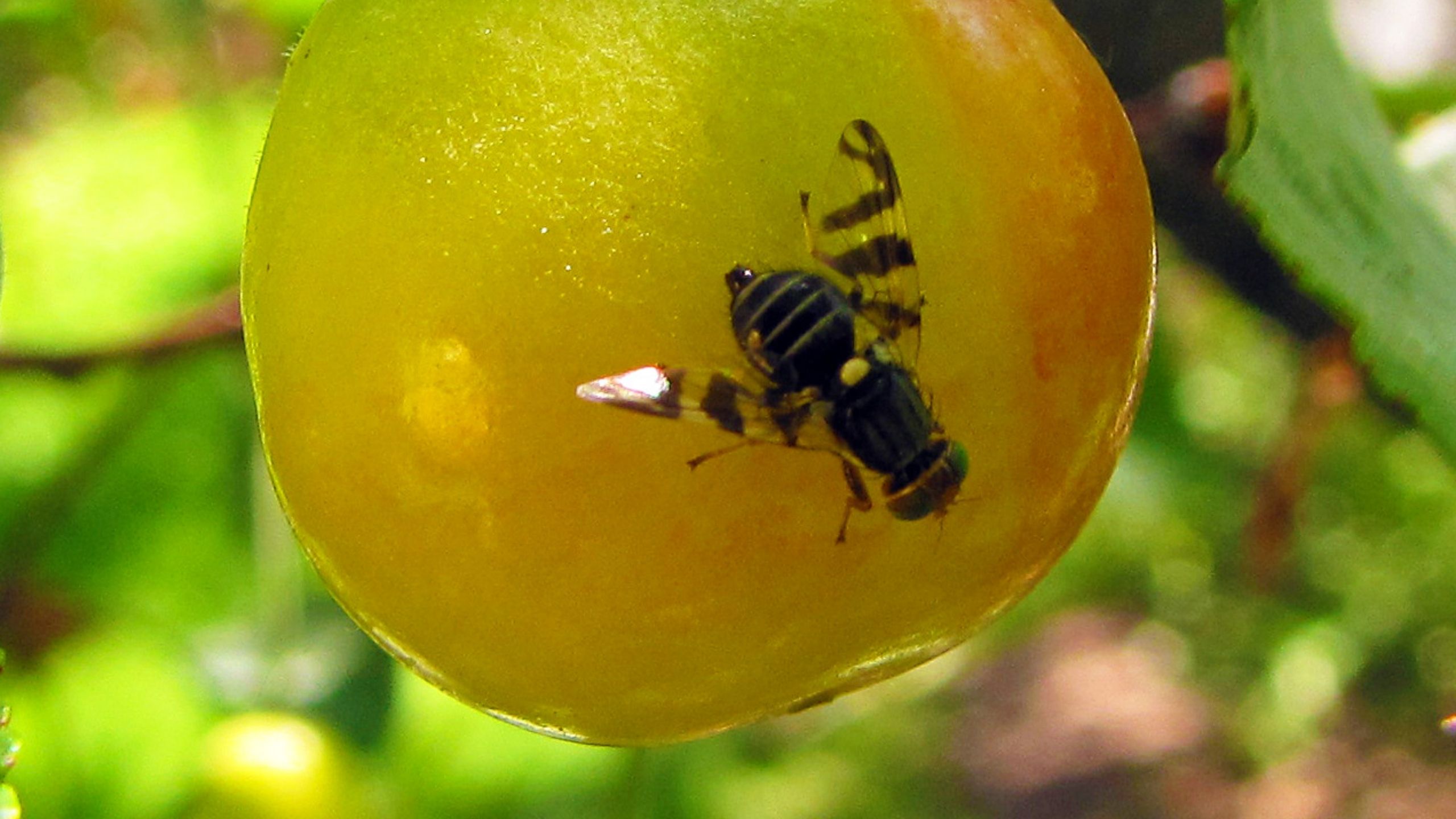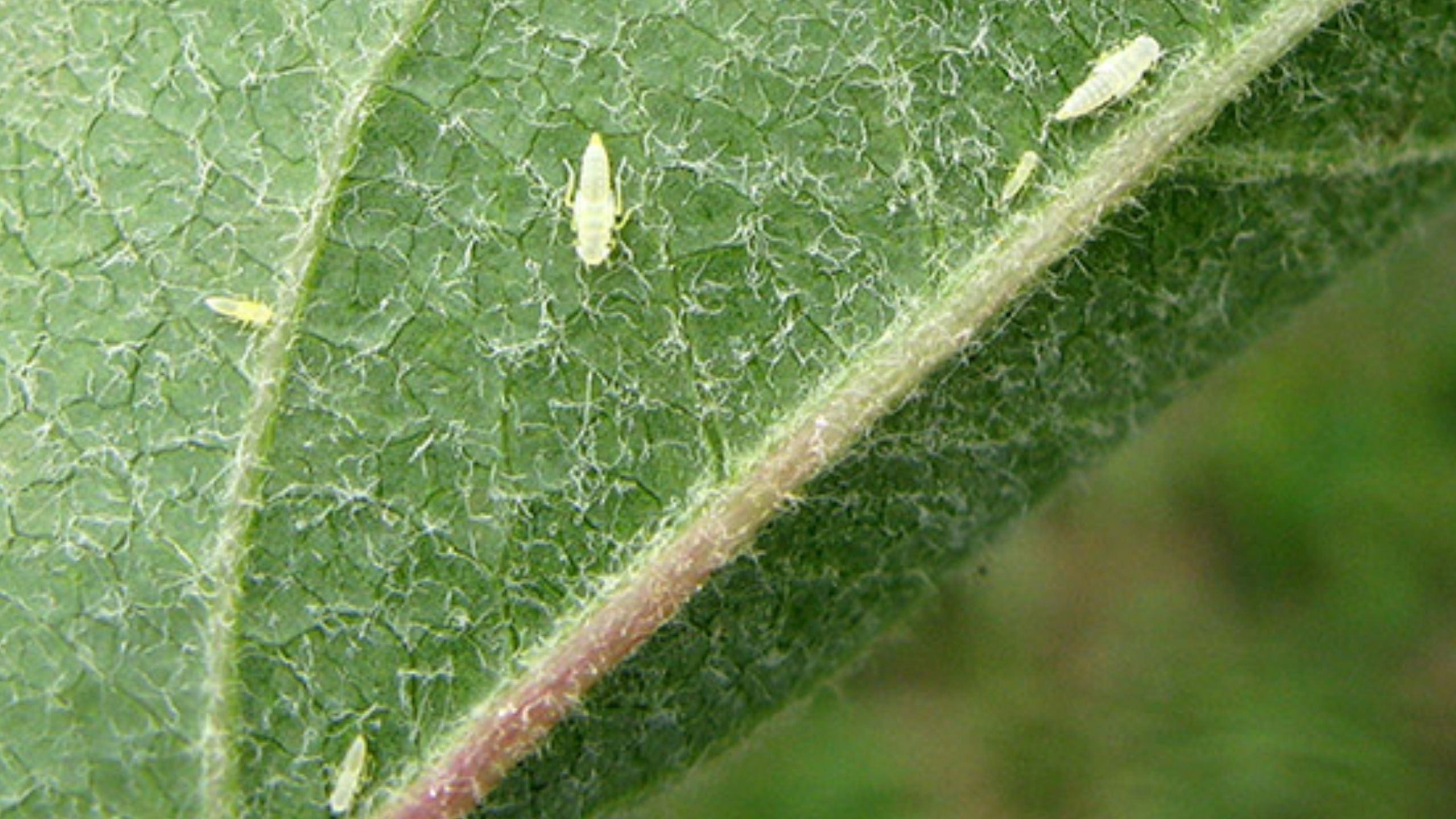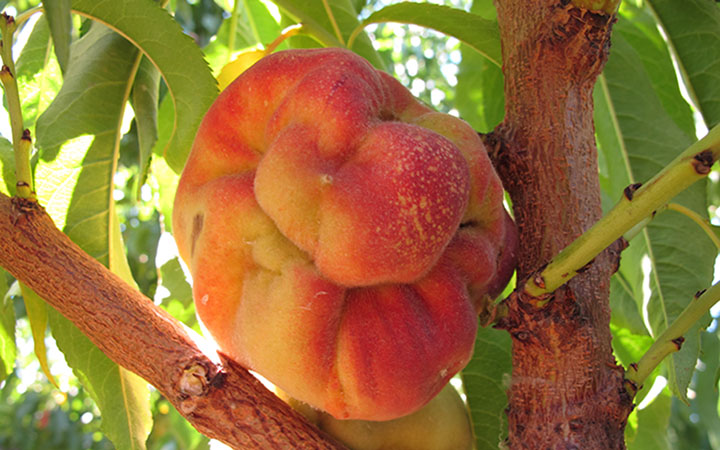Codling Moth in Utah Orchards
January 2020
Marion Murray, Extension IPM Specialist • Diane Alston, Extension Entomologist (No longer at USU)
Quick Facts
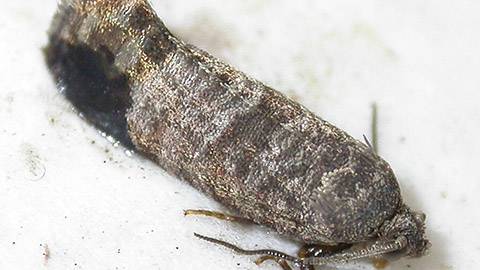
- Codling moth is the major pest of apple and pear, where the larvae tunnel into fruit.
- Codling moths have 2 to 3 generations in Utah, and therefore, fruit is susceptible to attack all season long.
- This pest is monitored by inspecting fruit for damage and with pheromone traps.
- Cultural controls include sanitation, trunk banding, and fruit thinning.
- Biological control is minimally effective because larvae are protected inside fruit.
- Bagging fruit, although labor-intensive, provides complete control.
- For most growers, the main management tactics are insecticides (organic options available) and/or mating disruption (organic).
- Site-specific recommendations are provided by the USU Extension Fruit IPM Advisories or from your county USU Extension office.
Codling moth (Cydia pomonella; Order Lepidoptera, Family Tortricidae) is the most serious pest of apple and pear worldwide. In most of Utah, fruit must be protected season-long to harvest a quality crop. Insecticides are the main control tactic, with both organic and conventional options available. For commercial orchards with more than 10 acres of contiguous apple and/or pear trees, mating disruption, a certified organic practice, can greatly reduce codling moth populations to allow reduced insecticide use (see the USU Fact Sheet, “Codling Moth Mating Disruption”). Natural biological control does not effectively reduce populations because newly hatched codling moth larvae enter fruit immediately, protecting them from predators. Sanitation and other cultural methods can help reduce codling moth densities, but alone usually do not provide satisfactory control.
In Utah, there are two to three generations of codling moth each year. In northern Utah, there are two full generations and a partial third generation. In southern Utah, most or all of a third generation will occur. Moths fly and lay eggs season-long until about mid-September, when declining day-length induces the end of activity for the year.
HOST
primarily in: apple, pear, crabapple, and English walnutrarely in: quince, apricot, plum, peach
LIFE HISTORY
Adult (Moth)
- Size and Color: 1/2 inch long; mottled gray and brown moth; bands of alternating gray and white on wings with a bronze to copper spot on the tip of each forewing (Fig. 1).
- Where: camouflaged against tree bark during the day with wings held tent-like over body.
- In spring, moths start emerging when evening temperatures exceed 55°F. Each evening, peak moth activity is a few hours before and after twilight.
- Mated female moths can each lay 30 to 70 eggs.
Egg
- Shape and Color: pinhead sized, flat, oval; translucent when first deposited, later turning white; just before hatching, the black head of the larva is visible.
- Where: laid singly on fruit or on leaves near fruit; difficult to spot (Fig. 2).
- Hatch occurs in 6 to 20 days, depending on temperature.
Larva (Damaging and Overwintering Stages)
- Size and Color: 1/10 inch long upon hatching, pale white with a black head; 1/2 - 3/4 inch long when fully grown, tan to pink with a brown head (Fig. 3).
- Where: enter fruit within 24 hours after hatching, tunneling to core to feed on developing seeds.
- Larvae pass through five instars inside fruit in 3 to 5 weeks, after which they exit the fruit to seek out a protected site (under loose bark, at the base of the tree, in fruit bins, in orchard trash piles).
Pupa
- Size and Color: 1/2 inch long, brown.
- Where: pupation of overwintering larvae occurs when spring temperatures exceed 50° F in late February and early March.
- The development period is 7 to 30 days, depending on temperature.
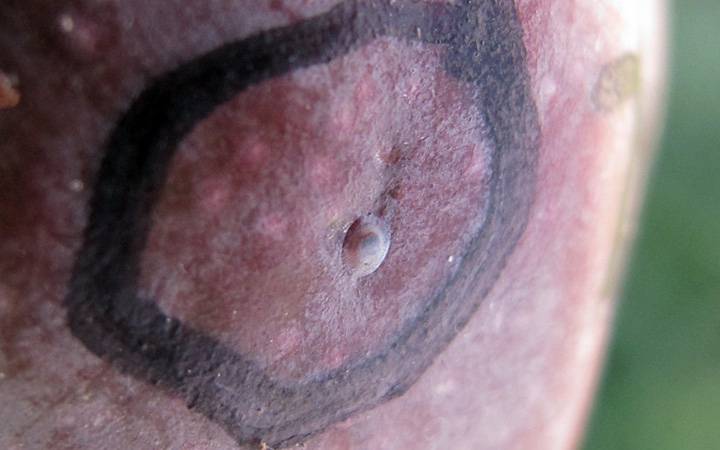
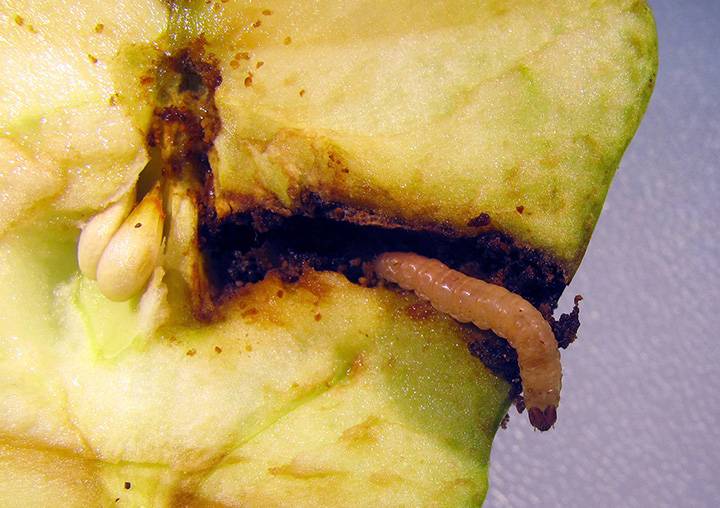
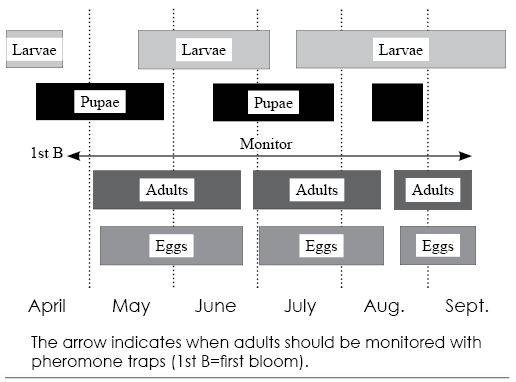
FRUIT INJURY
Entries
- Larvae tunnel to center of fruit to feed on seeds.
- Brown frass (excrement) extrudes from entry and exit holes (Fig. 5).
- Fruit attacked during the first generation drops prematurely.
- Entries often happen at the calyx end (Fig 5, left).
Stings
- Stings (Fig. 5, right) are healed shallow or aborted entries that occur due to larval death or when larvae abandon a feeding site.
TIMING CONTROL
Monitoring with Pheromone Traps
Trap Placement
- Large plastic delta traps with a pheromone lure placed atop a sticky liner can be used to monitor adult activity (Fig. 6). Orange traps should be used, as white traps attract bees. Click here for suppliers.
- Various types of lures are available. Sex pheromone lures (codlemone) attract male moths and pear ester (kairomone) attracts females. The addition of acetic acid to the lure enhances trap catch. Choice and strength of the lure will depend on whether the orchard will be treated with mating disruption. Lures are available as a rubber septum or membrane:
| Lure Type | Sex Attracted | Orchard Type | Lure Longevity |
| 1X (codlemone) |
Males | Non-mating disrupted(MD) | 30 or 60-day |
| 10x (codlemone) | Males | MD | 21-day |
| CM-DA Combo (codlemone + pear ester) | Both | MD | 60-day |
| CM-DA Combo + acetic acid | Both | MD | 60-day |
- Traps should be hung in orchards by first bloom or based on degree-day (temperature) accumulations (Table 1). Place them within the upper third of the tree canopy (preferably 6 - 7 ft. high), making sure the trap entrance is not blocked and that it is parallel to the prevailing wind direction (Fig. 7).
- A minimum of two traps should be placed in each orchard. For orchards greater than 10 acres, use one trap for every 5 acres.
- Hang at least one trap on the edge and at least one near the center of the orchard to determine if moths are immigrating from outside sources and/or over-wintering within the orchard. Suspected “hot spots” within the orchard should be monitored separately.

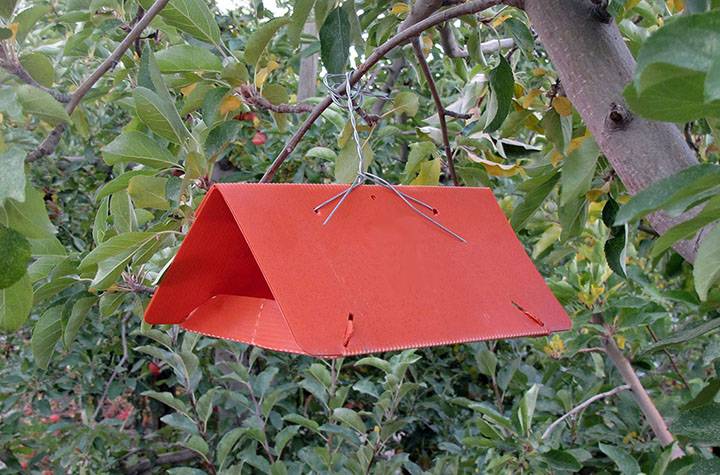
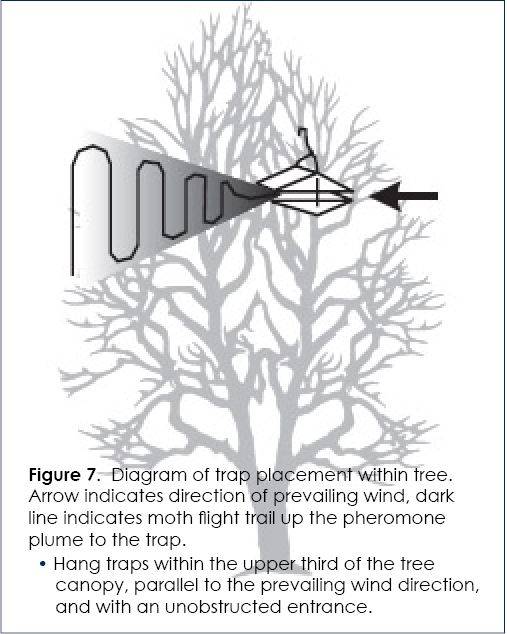
Trap-Based Biofix
- In spring, check traps every 1 to 2 days until the first moth is caught (biofix).
- Biofix marks the beginning of consistent moth flight, and is a biological marking point from which the rest of an insect’s development is measured. Consistent moth flight is where one moth is captured per night on consecutive nights.
- It is imperative to record the date on which biofix occurs to accurately initiate the codling moth model.
Trap Servicing
- Trap catch data can be used to monitor moth emergence to start degree-day accumulations, to assist with determining optimal spray timings, to determine the relative size of the moth population, and to help in evaluating the success of your management program.
- After biofix is set, check traps weekly and record the number of moths caught (see the USU Fact Sheet, “Codling Moth Sampling Form”). After recording, remove moths from the sticky liner.
- Change pheromone lures based on product longevity and change sticky liners after excessive debris has collected on the surface.
- Do not cross-contaminate lures or traps with lures from different insect species (traps absorb pheromone odors). Do not handle or store unsealed pheromone lures together from more than one species.
- Plan to use the same type of trap and lure from year to year so that you can compare results.
Problems Getting a Biofix
- Cool and wet weather in spring can confound setting an accurate biofix date. Moth activity begins when temperatures exceed 55°F; however, evening temperatures below 60°F are not conducive to moth flight, and rainfall or a lack of breeze hampers a pheromone plume emerging from the trap.
- USU Extension researched the use of a site-specific, fixed biofix option for Utah and found that this method reduced the need to get a trap-based biofix and was just as accurate. For more information, see the fact sheet, “An Alternate Codling Moth Biofix.”
Interpreting Trap Catch Results
- Zero trap catch does not necessarily mean there are no moths in the orchard.
- Old or ineffective lures can cause zero trap catch.
- In non-mating disrupted orchards, there is no threshold for treatment, as traps in most Utah locations will catch more than 20 moths per week.
- In mating-disrupted orchards, the threshold for fruit injury using the CM-DA Combo lure is 10 moths per week.
Degree Day Model
Explanation of the Model
- Codling moth development occurs between the lower and upper thresholds of 50°F and 88°F.
- The development of codling moth, like all insects, can be predicted based on accumulated heat over time, called degree days (DD). Use of the codling moth DD model will help to more accurately time insecticide applications and optimize the number of total applications.
- Site-specific degree day information can be obtained from the Utah Climate Center TRAPs website or from your county Extension office.
- Place pheromone traps in orchards when 100 DD have accumulated (first pink of Red Delicious) after January 1 in southern Utah or after March 1 in northern Utah. The first moths are expected by 150 - 200 DD (approximately full bloom of Red Delicious).
- Once biofix (first consistent moth catch) has occurred, the codling moth model begins (Table 1).
Timing Sprays
- If mating disruption (MD, see page 6) is used in an orchard, dispensers should be hung immediately before or at biofix to prevent mating and egg-laying (get a biofix at a nearby non-MD location or use site-specific fixed biofix date). Supplemental insecticide treatments are usually necessary even when MD is used. The first cover spray is critical for suppression of the first generation, and thus, the following generations.
- Apply the first cover spray for each generation as noted in Table 1. Reapply insecticides based on the protection interval of the product used. Keep fruit protected throughout each generation, and up through mid-September (when codling moth activity ends).
- If using mating disruption, apply insecticide according to trap catch (see next section).
- As harvest date approaches, consider the pre-harvest interval (required time interval between insecticide application and harvest) in planning late-season treatments.
MANAGEMENT
For customized and site-specific management recommendations, sign up for USU Extension’s Tree Fruit IPM Advisories.Fruit Thinning
Newly-hatched larvae often seek out protected sites for entry, such as where fruits touch each other. Thinning fruit to just one apple per cluster can limit entries. Fruit thinning also allows for improved insecticide coverage on the entire fruits.
Sanitation
- Remove abandoned orchards and wild hosts within a quarter-mile (450 yards) of orchards to destroy outside codling moth sources.
- Strip fruit remaining after harvest in young, unharvested orchards or on pollinator trees.
- Remove or destroy nearby piles of culled fruit.
- Remove additional pupation sites from orchards such as fruit bins, brush, woodpiles, and other debris.
- Fruit infested during the first generation typically drop to the ground in June or July. Remove or destroy (e.g., flail or mow) dropped fruit to reduce second-generation densities.
Trunk Banding
- Place corrugated cardboard bands, burlap, or similar material (2 - 3 inches wide) around trunks of trees in May to collect first generation larvae, and repeat in August to collect overwintering larvae that are moving to the trunks to pupate.
- Remove and destroy the bands before moths emerge in mid- to late June (for first generation) or in late October to November (for overwintering generation).
- This method is most effective on smooth-barked trees and in smaller, isolated orchards without nearby sources of codling moth.
| Degree Days | % Adults Emerged | % Egg Hatch | Management Event |
|---|---|---|---|
| 100* | 0 | 0 | Place traps in orchards |
| 150-200 | First moths expected | 0 | Check traps ever 1-2 days until biofix is determined |
| First Generation | |||
| 0 (biofix)† |
First consistent catch | 0 | Degree days are reset to 0 |
| 50-75 | 5-9 | 0 | First eggs are laid |
| 200 | 40 | 0 | Period just before egg hatch. Apply horticultural oil to smother all eggs laid up to this point (optional) |
| 220-250 | 45-50 | 1-3 | Beginning of egg hatch. Apply insecticides that target newly hatched larvae |
| 350 | 68 | --- | If oil was applied at 200 degree days, apply first insecticide at this timing |
| 340-640 | 67-98 | 12-80 | Critical period for control, high rate of egg hatch. Important to keep fruit protected during this period |
| 920 | 100 | 99 | End of egg hatch for 1st generation |
| Second Generation | |||
| 1000- 1050 | 5-8 | 0 | First eggs of 2nd generation are laid |
| 1100 | 13 | 1 | Beginning of egg hatch. Apply insecticides that target newly hatched larvae |
| 1320- 1720 | 46-93 | 11-71 | Critical period for control, high rate of egg hatch |
| 2100 | 100 | 99 | End of egg hatch for 2nd generation |
| Third Generation | |||
| 2160 | 1 | 15 | Beginning of egg hatch. Keep fruit protected through September 15. Check pre-harvest interval of material used to ensure that final spray is not too near harvest. |
*Begin accumulating degree days after daily temperatures begin to exceed 50°F, typically on January 1 for southern Utah or March 1 for northern Utah.
† Biofix is when at least one moth is caught on consecutive nights.
Fruit Bagging
Exclude codling moth larvae by placing specially-designed fruit- or paper bags over fruit.
- Wait to apply bags until the fruit is 1/2 to 3/4 inches in diameter to avoid fruit drop.
- An insecticide application may be required before bags are applied to prevent early infestation.
- Secure bags with a twist-tie or string, but don’t constrict the stem.
- For small paper bags (e.g., pastry sacks), cut a small slit in the bag bottom, slip the slit over the fruit, and close the bag opening with a twist-tie.
- Remove the bags 1 to 2 weeks before fruit is mature to allow the fruit to color.
Biological Control
Use of more selective and lower-toxicity insecticides enhances populations of beneficials (predaceous arthropods and parasitic wasps). Native enemies alone, however, do not provide satisfactory control. The egg parasitoid wasp, Trichogramma, has shown potential especially in combination with other management tools.
Mating Disruption
It is important to understand how mating disruption works, or failure to control codling moth could result from improper use. The orchard size, proximity to outside sources of codling moth, and dispenser placement and application rate can all influence success. The typically small size of apple and pear blocks in Utah (less than 10 acres) and the high codling moth populations reduce the effectiveness of mating disruption in Utah as compared to other areas of the West. Mating disruption is not effective in home yards or orchards smaller than 10 acres. Refer to the publication, “Codling Moth Mating Disruption” for more information.
- Place MD dispensers containing the female sex pheromone (various brands) at or before biofix.
- Options include hand-applied dispensers that are hung at 200-400 per acre density or aerosol devices that are hung at 1-2 per acre. Aerosol devices work best in orchards 40 acres in size or more.
- Mating disruption dispensers containing the female attractant, pear ester, and sprayable formulations of pear ester, are available to enhance MD efficacy.
- Research in Utah has demonstrated the importance of continual monitoring of moths with traps in mating disrupted orchards. The dual gender lure (CM-DA Combo) has proven more effective than the 10X codlemone lure in catching moths in MD orchards. Refer to the publication, “Codling Moth Mating Disruption” for information on trap thresholds.
- If the orchard has a history of codling moth problems, use one or two applications of insecticides against the first generation. If a codling moth source exists nearby, apply insecticide border sprays (5 - 6 rows) to prevent fruit damage on edges from immigrating mated moths.
- Be aware that if insecticide applications are reduced substantially, populations of other pests (e.g., leafrollers, piercing-sucking bugs, aphids, scale, etc.) can increase.
Insecticides
Current insecticide choices include synthetic materials, microbial and botanical insecticides, and petroleum or plant-based oils (Table 2). The choice depends on numerous factors including commercial versus home orchard production, the crop’s market destination, grower preferences, size of the orchard, codling moth pressure in the area, and the surrounding habitat.
Select insecticides with the desired modes of action and apply them at optimal timings to coincide with key development periods (Table 1).
If the orchard is large (more than 10 acres) and moths are only found in border traps, treating four to five border rows may markedly reduce the amount and number of insecticide applications. This tactic is primarily used after first and second cover sprays have been applied or in conjunction with mating disruption.
Rotate among insecticide classes to prevent development of insecticide resistance.
Table 2. Insecticide options for commercial and residential sites, listed by Mode of Action (MOA).
| MOA | Ingredient | COMMERCIAL | RESIDENTIAL | Efficacy | Notes |
|---|---|---|---|---|---|
| Conventional (non-organic) Options | |||||
| 1 | phosmet | Imidan 70 W | 3-4 | Must be buffered to appropriate pH | |
| 1 | carbaryl | Sevin 4F | 2-3 | ||
| 1 | malathion | Spectracide Malathion; Bonide Malathion | 2-3 | Short residual (5-7 days); max 2 applications per season | |
| 3 | esfenvalerate | Asana XLR | Monterey Bug Buster II | 3-4 | |
| 3 | fenpropathrin | Danitol 2.4 ECR | 3 | ||
| 3 | lambda-cyhalothrin | Warrior IIR | Bonide Fruit Tree & Plant Guard | 4 | |
| 3 | gamma-cyhalothrin | Spectracide Triazicide Insect Killer | 3-4 | ||
| 3 | zeta-cypermethrin | GardenTech Sevin; Gordon's Bug-No-More | 3-4 | ||
| 3/4 | lambda-cyhalothrin/ thiamethoxam | Endigo ZCR | 2-3 | ||
| 3/28 | lambda-cyhalothrin/ chlorantraniliprole | Voliam XpressR | 4 | ||
| 4 | acetamiprid | Assail 30 SG | 3-4 | Use with oil | |
| 4/28 | thiamethoxam/ chlorantraniliprole | Voliam Flexi | 4 | ||
| 5 | spinetoram | Delegate WG | 3-4 | ||
| 5 | spinosad | Success | Bonide Captain Jack's Deadbu Brew | 2-3 | |
| 6 | emamectin benzoate | ProclaimR | 3 | Use with oil | |
| 7 | pyriproxyfen | Esteem 35 WP | 3 | Use with oil | |
| 15 | novaluron | Rimon 0.83 EC | 3-4 | Targets eggs | |
| 28 | chlorantraniliprole | Altacor | 4 | ||
| 28 | cyantraniliprole | Exirel | 4 | ||
| Organic Options | |||||
| 3 | pyrethrin | Azera, PyGanic, Tersus | Fertilome Triple Action | 2-3 | 3 to 5 day protection interval |
| 3/28 | potassium salts of fatty acid + pyrethrin | Safer Insecticidal Soap and Pyrethrin Insect Killer | 2 | Short protection interval | |
| 5 | spinosad | Entrus | Monterey Garden Insect Spray | 2-3 | 7-day protection intercal |
| 11 | Bacillus thuringiensis | Biobit HP, Dipel DF, XenTari | Monterey Bt | 3-4 | Must be applied when larvae are less than 1/2 inch |
| 28 | potassium salts of fatty acid | M-Pede, Kopa | Safer End All Insect Killer | 2 | Very short residual period; targets eggs |
| NC | Chromobacterium subtsugae | Grandevo | 2-3 | ||
| NC | codling moth granulosis virus | Cyd-X | 2 | Works best at beginning of each generation | |
| NC | horticultural oil | many brands | Safer Horticultural and Dormant Spray Oil; All Season Spay Oil; Volk Oil | --- | Can be effective as one application just before eggs hatch of each generation to smother eggs |
| NC | mating disruption | Checkmate CM-O Puffer or CM-XL; Isomate CM Mist Plus or CM Flex | 4 | Other brands and options are available. For more information, see USU Fact Sheet, "Codling Moth Mating Disruption" | |
| NC | neem oil and other plant-based oils | Triple Action Neem; Garden Safe Neem | 1-2 | ||
| UN | azadirachtin | Aza-Direct, AzaGuard, Azatrol | 2 | ||
Examples of brands may not be all-inclusive, but are meant to provide examples of effective insecticides registered on apple and pear in Utah.
RRestricted use products require an applicator license.
UN = Unknown mode of action



